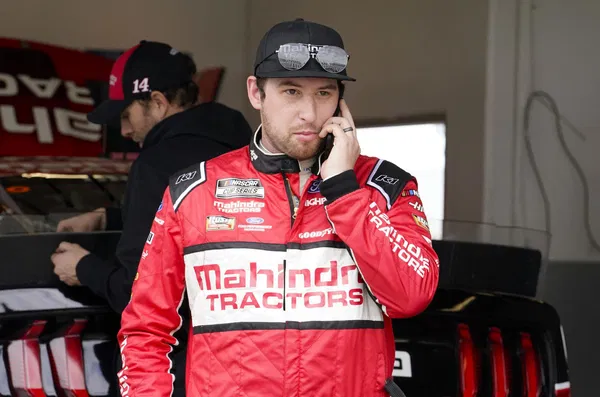The race at Watkins Glen was chaotic, with numerous wrecks taking out cars throughout the event. One of the most problematic spots on the track was the bus stop, where several collisions occurred. From the very first lap, which saw Ryan Blaney and Ricky Stenhouse Jr. eliminated, drivers were aggressively pushing into the turn, leading to significant contact. After the race, Tyler Reddick, the regular-season champion and a top driver for Michael Jordan’s 23XI Racing, voiced his frustrations about the way the race unfolded.
Tyler Reddick, who has already secured his spot in the NASCAR playoffs and is currently sixth in the standings, didn’t hold back when discussing how the race at The Glen turned out. Despite being safe from the first round of playoff eliminations, Reddick was clearly dissatisfied with the level of aggression on the track.
Tyler Reddick’s Frustration with Watkins Glen
Reddick’s own race was far from ideal, as he finished in a disappointing 27th place after spinning out multiple times. Starting in 16th, he managed to climb up to 7th place, earning valuable stage points in the process. However, after a pit stop during the stage break, things took a turn for the worse.
With fresh tires and high hopes, Reddick returned to the track, but his momentum was cut short when Daniel Suarez’s No. 99 Chevrolet made contact with his Toyota, causing him to spin out. This incident, combined with a pit stop towards the end of the stage, left Reddick languishing in 31st place.
After the race, Reddick expressed his disappointment during an interview with SiriusXM NASCAR Radio. He didn’t mince words, saying, “There is no more driver code. It’s gone.” His comments echoed those of Martin Truex Jr., who had earlier described the race as “ridiculous.” Reddick agreed wholeheartedly, adding that the race had devolved into something he found unacceptable.
Reddick’s main issue with the race was the way drivers were using each other’s cars as brakes, especially during restarts. He explained, “You go back to watch some cars, and lots of people are driving into the corner on a restart, just using the car ahead as a brake pedal. It sucks.” This lack of respect for other drivers on the track was something that clearly bothered him.
Although Reddick acknowledged that he hasn’t always been the cleanest driver, he emphasized that there’s a difference between running someone wide while battling for position and deliberately running them off the track. He expressed his discomfort with this style of racing, saying, “I just don’t like racing that way.”
Reddick on Next-Gen Cars and Aggressive Racing
Reddick also touched on how the introduction of the next-gen cars has changed the dynamics of racing. He pointed out that, in previous generations of cars, drivers had to be more cautious with contact because a hard bump could knock out the radiator, potentially ending their race. With the sturdier next-gen cars, drivers are able to be much more aggressive without suffering the same consequences.
“With the old car, you could bump a little, but you’d knock the radiator out. With this car, it feels like you can just use the front bumper and the padding around you to just knock people out of the way if you want to,” Reddick explained. He recognized that some level of contact is inevitable in NASCAR, but he drew the line at using other cars as brakes, particularly when speeding into tight corners.
The durability of the next-gen cars has allowed drivers to be more reckless, in Reddick’s view. While the cars were designed to improve driver safety, some are using the added strength of the vehicles as an offensive tool rather than a protective measure. Reddick believes that while aggressive driving can be part of the sport, there needs to be a limit, and drivers should be more mindful of when and how they make contact with others on the track.
After reflecting on his experience at Watkins Glen, Reddick remained hopeful that racing would return to a more respectful style but acknowledged that it might not be possible with the current generation of cars. “It just is what it is. I hope it changes,” he said, though he seemed to recognize that the aggressive nature of the sport may be here to stay, at least with the next-gen cars in play.
A Call for Stricter NASCAR Rules?
Given all that transpired at Watkins Glen, the question remains: does NASCAR need to implement stricter rules to curb the aggressive driving and collisions that seem to have become more common? With the next-gen cars allowing for more physical racing, some might argue that NASCAR should step in to prevent races from turning into wreck-fests.
What do you think? Should NASCAR introduce stricter regulations, or is aggressive racing just part of the sport? Feel free to share your thoughts in the comments below.




